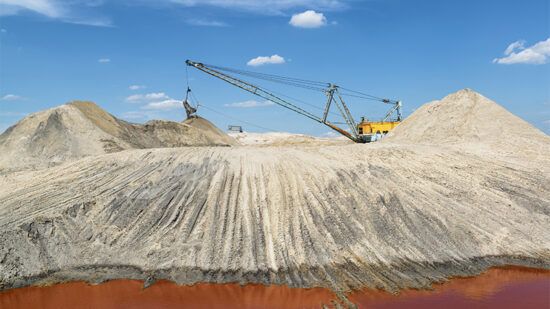In recent years, the world has witnessed an alarming increase in the frequency and intensity of wildfires, a phenomenon closely linked to climate change.
The global economic cost of wildfires is estimated to be between $394bn and $893bn annually. In the US, wildfire suppression costs have skyrocketed, reaching a record $4.4bn in 2021. These figures highlight the immense financial burden wildfires impose on economies worldwide.
But while the immediate devastation of wildfires is often measured in terms of land area burned and property destroyed, the ripple effects extend far beyond terrestrial boundaries, reaching into the heart of our oceans.
When forests burn, ash and debris are carried by wind and water into rivers, eventually reaching the ocean. This influx of nutrients can lead to algal blooms, which deplete oxygen levels in the water and create dead zones where marine life struggles to survive.
Additionally, the soot and particulate matter from wildfires can settle on the ocean’s surface, affecting the amount of sunlight that penetrates the water and disrupting the photosynthesis process of marine plants and phytoplankton. The vibrant coral reefs, teeming with life, suddenly suffocate under a blanket of ash.
The disruption of these foundational elements of the marine food web can have cascading effects on the entire ecosystem. Fish populations may decline due to the loss of food sources, and coral reefs, already stressed by rising ocean temperatures and acidification, may suffer further damage from increased sedimentation and reduced water quality. Therefore, with wildfires becoming more intense due to climate change, our oceans are under threat like never before.
Blue economy at risk
The blue economy, which encompasses industries such as fisheries, tourism and marine biodiversity conservation is particularly vulnerable to the dual threats posed by wildfires and climate change. Healthy oceans are essential for the sustainability of these industries, and any disruption to marine ecosystems can have significant economic and social consequences.
Fisheries, for example, rely on stable fish populations and healthy marine habitats. The decline in fish stocks due to disrupted food webs and degraded habitats can lead to reduced catches, impacting the livelihoods of millions of people who depend on fishing for their income. Moreover, the loss of biodiversity can affect the resilience of marine ecosystems, making them more susceptible to other stressors such as overfishing and pollution.
Tourism, another pillar of the blue economy, is also at risk. Coastal areas that draw tourists for their natural beauty and recreational opportunities can be severely impacted by wildfire aftermath. Smoke and ash reduce air quality and visibility, deterring visitors. Degraded marine environments diminish the appeal of activities like snorkelling and diving, further impacting local economies.
Marine life in peril
Marine biodiversity conservation efforts are similarly challenged by the interplay of wildfires and climate change. Conservation initiatives often focus on protecting specific species or habitats, but the widespread impacts of wildfires can undermine these efforts by altering entire ecosystems.
The statistics on marine life loss are staggering. Over one-third of marine mammals and nearly one-third of sharks, shark relatives and reef-forming corals are threatened with extinction. Since 1870, we have lost approximately 50% of the world’s coral reefs. Mangroves, which are crucial for coastal protection and biodiversity, have seen a 40% decline since 1970.
Moreover, human activities have significantly altered two-thirds of the ocean, with only 13% of marine ecosystems remaining intact. This rapid decline in marine biodiversity is unprecedented and poses a severe threat to the health of our oceans and the blue economy.
Integrated land and sea solutions
To combat the dual threats of wildfires and climate change, we need integrated solutions addressing both land and sea. Sustainable land management practices, such as controlled burns and reforestation, can reduce the risk of severe wildfires. These practices protect terrestrial ecosystems and prevent downstream effects on marine environments.
On the marine side, enhancing the resilience of ocean ecosystems is crucial. Protecting and restoring habitats like mangroves, seagrasses and coral reefs can buffer against the impacts of wildfires and climate change. Reducing other stressors, such as overfishing and pollution, helps build resilience and supports ecosystem recovery.
The blue economy, valued at about $2trn globally, is vital for millions of livelihoods, particularly those in coastal and island communities. Protecting this sector involves a coordinated effort that integrates both terrestrial and marine conservation strategies. This is because activities on land, such as agriculture, urban development and industrial processes can have significant impacts on marine environments through pollution, habitat destruction and climate change. Therefore, effective conservation strategies must address both land-based and marine-based activities to ensure the sustainability of ocean resources.
One of the most effective ways to address these challenges is through targeted funding that supports key pressure points linked to ocean health. A strong example is the DP World blue bond, in which T. Rowe Price was a key investor. This transaction is significant not only for its immediate impact but also for the precedent it sets. Half of the proceeds are directed toward sustainable marine transportation, supporting DP World’s efforts to help the shipping industry meet the International Maritime Organisation’s 2040 decarbonisation targets.
The other half is dedicated to marine conservation and reducing pollution, critical in ensuring that oceans, which serve as vital carbon sinks, remain resilient against acidification and climate change. Just as importantly, the sustainable financing framework attached to this bond provides a replicable model for other port operators and marine-related industries, demonstrating how capital markets can drive meaningful change in protecting the blue economy.








